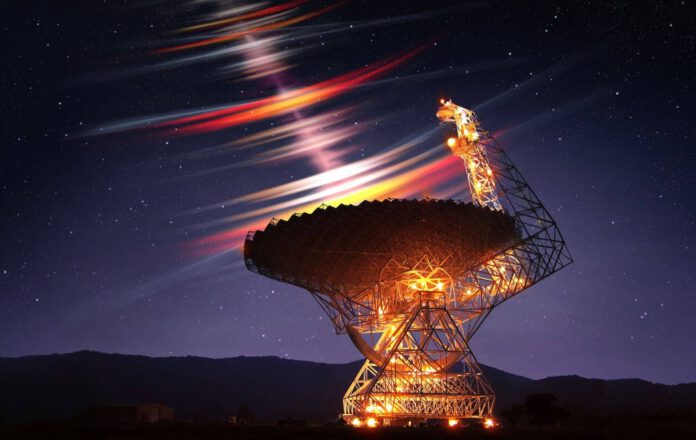
Astronomers have long suspected their existence, but for the first time, they have discovered an ultra-fast microsecond flash. Interestingly, this discovery was made in an unexpected location: within a dataset that was previously developed to hunt for extraterrestrial life.
Presented in Nature Astronomy
The discovery is highlighted in Nature Astronomy, where scientists from an international research team, partnered with ASTRON, present the discovery of eight rapid radio bursts. At first glance, this may not seem significant; after all, researchers have detected many of these mysterious radio pulses since 2007. However, most of the radio bursts discovered thus far lasted about one-thousandth of a second, or slightly longer. The eight bursts the researchers have now detected lasted a minimal ten millionths of a second!
Radio Bursts of Short Duration
Thus, in a milestone achievement, researchers now have detected rapid radio bursts that endure much shorter than previously recorded bursts—lasting a mere ten-millionth of a second (or shorter!). Interestingly, these flashes were traced to the well-known repeating radio burst FRB 20121102A, located about three billion light years away, in the constellation of Auriga. The actual genesis of these ultra-fast radio pulses, however, remains unclear.
The Hunt
The suspicion that ultra-fast radio pulses could exist in space goes way back, explains researcher Mark Snelders. But tracking down such rapid pulses is undoubtedly a challenge—not only because they have short lifespans but also because it is simply impossible to predict where and when they arise. Then, Snelders realized that there was a public dataset potentially harbouring these elusive ultra-fast radio bursts, waiting to be discovered. “That provided a new avenue of investigation,” he says.
Breakthrough Listen
The dataset in question is the public archive of a project named Breakthrough Listen. Within this research project, radio telescopes are utilized to search for extraterrestrial life signals. Though this search has proven to be fruitless thus far, the newly discovered properties of the acquired data are valuable. For their research, scientists focused specifically on the collected data from the repeater FRB 20121102A—five hours of data, to be exact—by dissecting the first 30 minutes’ worth into half a million individual frames per second. They then utilized software filters and artificial intelligence to pinpoint ultra-fast flashes. Their efforts were fruitful, unveiling eight flashes lasting ten millionths of a second or shorter.
The Future of Ultra-fast Microsecond Flashes
This discovery makes FRB20121102A an ultra-fast microsecond flasher. Whether or not this is significant remains to be seen. However, the researchers anticipate there are more such flashers waiting to be discovered. The major challenge lies in detecting them. More datasets are available for further investigation, but some may be coarser than the Breakthrough Listen dataset, therefore complicating the dissection of data files into half a million pieces per second to detect ultra-fast flashes. Despite the obstacles, researchers are hopeful to discover more of these peculiar flashes in the future, thereby enabling a better understanding of how these ultra-fast micro-flashes come into existence.











